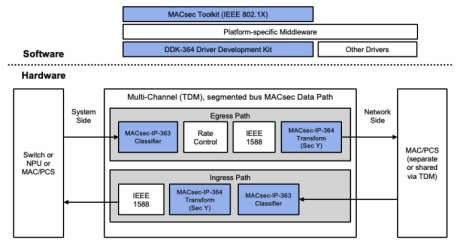Interface Security IP
All offers in
Interface Security IP
Filter
Compare
82
Interface Security IP
from
20
vendors
(1
-
10)
-
IPSEC AES-256-GCM (Standalone IPsec)
- XIP7213E implements the Internet Protocol Security (IPsec) as standardised in RFC4303 and RFC4305.
- The IPsec protocol defines a security infrastrucure for Layer 3 (as per the OSI model) traffic by assuring that a received packet has been sent by the transmitting station that claimed to send it.
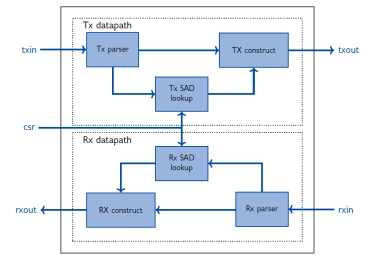
-
Inline Decrypter & Authenticator IP Core for Automotive
- The Inline Decrypter and Authenticator IP core enables on-the-fly execution of encrypted and signed code from Flash.
- It is used to authenticate and decrypt code located in Flash. In addition it is ISO26262 certified (ASIL-D).
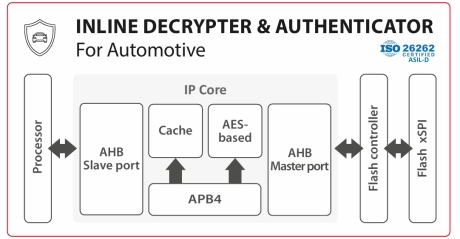
-
Memory & Bus Protection IP Core
- The Memory & Bus Protection IP Core module enables on-the-fly encryption/decryption and authentication to the external memory.
- It supports AHB/AXI slave/master interfaces, APB port for configuration purpose, and contains a cache.
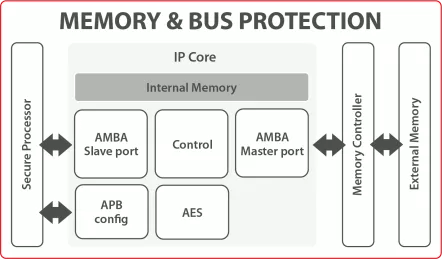
-
Inline Decrypter IP Core
- The Inline Decrypter IP Core enables on-the-fly execution of encrypted code from Flash.
- It is often used to protect the source code from decompiling or reverse engineering.
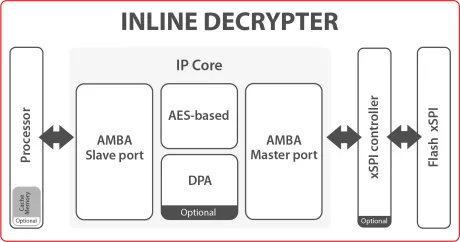
-
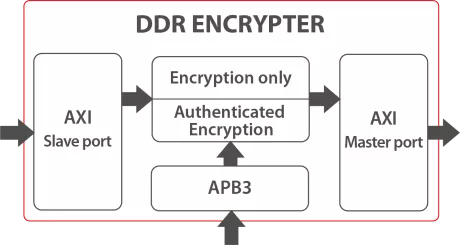
-
IPsec Engine
-
The IPsec Engine implements RFC4301 and other relevant RFCs, providing confidentiality, connectionless data integrity, data-origin authentication and replay protection on OSI layer 3.
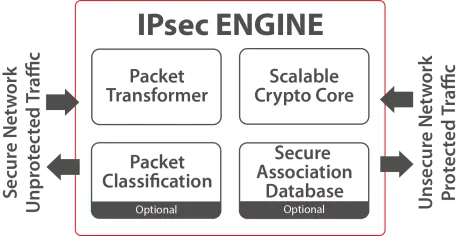
-
-
1.6 Tbps MACsec Engine
- Throughput up to 1.5Tb
- ASIC and FPGA
- Multi-channel support for link aggregation or FlexE
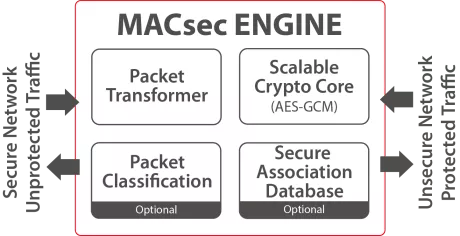
-
Network Security Crypto Accelerator
- The Network Security Crypto Accelerator is a hardware IP core platform that accelerates cryptographic operations in System-on-Chip (SoC) environment on FPGA or ASIC.
- This IP is used to accelerate/offload MACsec, IPsec, VPN, TLS/SSL, disk encryption, or any other custom application, requiring symmetric cryptography algorithms.
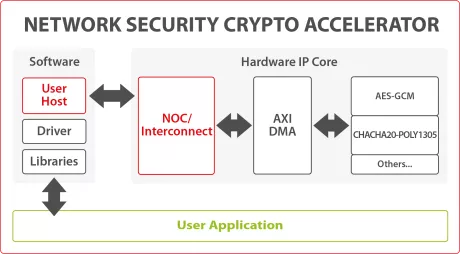
-
Fast Inline Cipher Engine, AES-XTS/GCM, SM4-XTS/GCM, DPA
- One input word per clock without any backpressure
- Design can switch stream, algorithm, mode, key and/or direction every clock cycle
- GCM: throughput is solely determined by the data width, data alignment and clock frequency
- XTS: block processing rate may be limited by the number of configured tweak encryption & CTS cores; a configuration allowing 1 block/clock is available
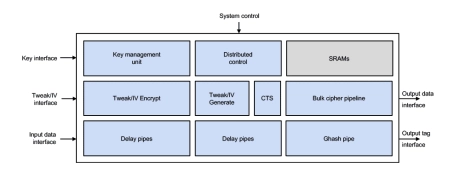
-
1.6T/3.2T Multi-Channel MACsec Engine with TDM Interface (MACsec-IP-364)
- The MACsec-IP-364 is a MACsec/IPsec engine developed specifically for high-speed, multi-rate and multi-port Ethernet devices.
- Its architecture provides an optimal multi-protocol solution for aggregate throughput for 1.6T and 3.2T.
- The MACsec-IP-364 is ideal for deployment in data center, enterprise and carrier network applications, as well as network-attached high-performance computing.
